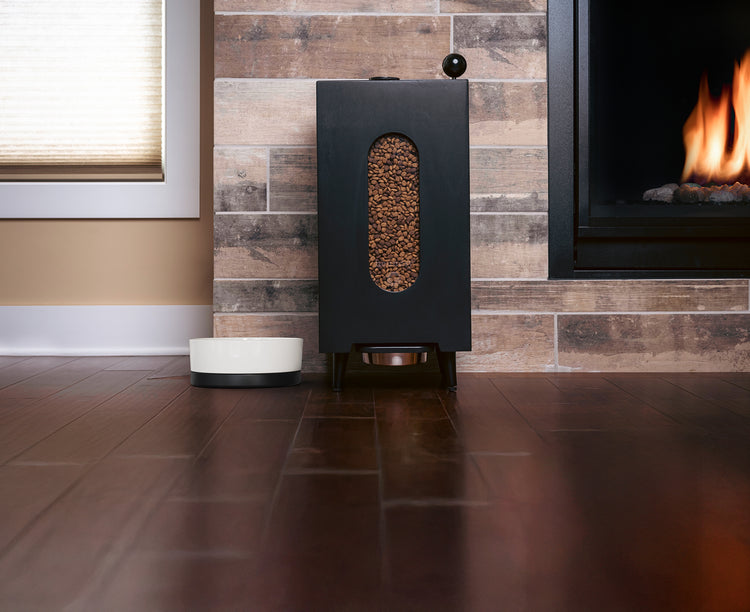Can Dogs with No Teeth Eat Dry Food? A Comprehensive Guide to Feeding Toothless Dogs
- Houndsy
Table of Contents
- Introduction
- The Reality of Tooth Loss in Dogs
- Can Toothless Dogs Eat Dry Food?
- Alternatives to Dry Food for Toothless Dogs
- Feeding Techniques for Toothless Dogs
- Regular Veterinary Check-Ups
- Conclusion
- FAQ
Introduction
Imagine your beloved dog, once a vigorous chewer of crunchy kibble, now facing the challenge of eating without their trusty teeth. It’s a scenario that many pet owners may encounter, especially as their furry friends age. In fact, studies show that nearly 80% of dogs over the age of three show some signs of dental disease, which can lead to tooth loss. This raises an important question for many dog owners: can dogs with no teeth eat dry food?
As dog lovers ourselves, we understand the emotional weight of ensuring our pets maintain a healthy and enjoyable eating experience, even when faced with such challenges. In this blog post, we will explore the dietary needs of dogs without teeth, examining the various options available to keep them healthy and happy.
By the end of this article, you’ll gain insights into how to effectively transition your toothless dog to a suitable diet, including whether dry food can still be on the menu. We will delve into the nutritional aspects, feeding techniques, and practical tips to enhance your dog’s mealtime experience. So, let’s embark on this journey to discover how we can best support our toothless companions!
The Reality of Tooth Loss in Dogs
Tooth loss in dogs can occur for several reasons, including periodontal disease, injury, or age-related degeneration. As a dog ages, the likelihood of losing teeth increases, and it’s crucial for pet owners to understand how this affects their pets' eating habits.
Understanding How Dogs Eat
Before we dive into specific dietary recommendations, it’s essential to recognize how dogs utilize their teeth. Unlike humans, dogs do not chew their food the same way. They rely on their incisors to grasp and their molars to shear food into smaller pieces. Even without teeth, many dogs can still manage to eat dry kibble by using their gums to mash the food against the hard palate.
The Importance of Diet for Toothless Dogs
A balanced diet is crucial for any dog, but it becomes even more vital for those without teeth. Dogs without teeth may struggle with dry kibble, leading to potential nutritional deficiencies if not addressed properly. Therefore, understanding the best feeding practices and dietary options can help ensure they remain healthy and satisfied.
Can Toothless Dogs Eat Dry Food?
The short answer is yes, dogs with no teeth can eat dry food, but with some caveats.
How Dogs Manage Without Teeth
While it may seem counterintuitive, many dogs can still enjoy their regular kibble even after losing their teeth. Here’s how they adapt:
- Gumming the Food: Some dogs will use their gums to mash the food against the roof of their mouths. This can allow them to break down kibble into manageable pieces.
- Swallowing Whole: Many dogs will simply swallow the kibble whole, relying on their digestive systems to handle the larger pieces. However, this method is not ideal as it can lead to choking or digestive issues.
Soften the Dry Food
If your toothless dog seems to struggle with their kibble, there are ways to make it more palatable:
- Soaking: Soak the kibble in warm water or low-sodium broth for about 10-15 minutes. This allows the kibble to soften, making it easier for your dog to eat.
- Mixing with Wet Food: Combining dry kibble with wet food can enhance both the taste and texture, making it more enjoyable for your dog.
- Pureeing: For dogs that are particularly sensitive, consider blending the food into a smooth consistency. This can be particularly useful for homemade meals.
Potential Issues with Dry Food
While many dogs can manage dry kibble without teeth, it’s essential to monitor their eating habits closely. Look for signs of discomfort or difficulty, such as:
- Excessive drooling
- Coughing or gagging
- Refusal to eat
If your dog experiences any of these symptoms, it may be time to switch to a softer diet.
Alternatives to Dry Food for Toothless Dogs
If you find that dry kibble isn’t working for your dog, there are several alternatives you can consider:
Canned or Wet Dog Food
Canned dog food is often softer and easier for toothless dogs to consume. Look for high-quality options that are low in preservatives and fillers. Even within canned food, consider mixing in some kibble for added texture, if your dog can handle it.
Homemade Dog Food
Creating homemade meals can be a rewarding way to ensure your dog receives the proper nutrition. Here are some simple recipes:
- Chicken and Rice: Boil chicken and mix it with cooked white rice and vegetables like carrots or peas. Blend the mixture for a smooth consistency.
- Beef Stew: Cook ground beef with vegetables and broth. Blend until smooth, ensuring no large chunks remain.
- Vegetable Medley: Steam a variety of vegetables such as sweet potatoes, carrots, and green beans, then mash or puree them.
Nutritional Supplements
If you're concerned about your dog’s nutrition, consult with your veterinarian about adding nutritional supplements. These can provide essential vitamins and minerals that may be lacking in a soft diet.
Feeding Techniques for Toothless Dogs
Creating a pleasant feeding experience for your toothless dog can involve adjusting your approach. Here are some effective techniques:
Smaller, Frequent Meals
Instead of feeding larger meals, consider offering smaller portions throughout the day. This can help prevent overwhelming your dog and aid in digestion.
Shallow Bowls
Using shallow bowls can make it easier for your dog to access their food without straining. This is particularly important for dogs that may have mobility issues.
Hand-Feeding
Some dogs do better with hand-feeding, especially if they are hesitant about eating. This can also strengthen your bond with your pet.
Regular Veterinary Check-Ups
Regular dental check-ups are essential for all dogs, especially those that have faced tooth loss. Your veterinarian can provide valuable insights into your dog's oral health, recommend dietary changes, and ensure that your pet is thriving.
Conclusion
Feeding a toothless dog may initially seem daunting, but with the right strategies and adjustments, it can be a seamless process. Understanding your dog's unique needs and preferences is key to ensuring they continue to enjoy their meals, regardless of their dental status.
From softening dry food to exploring alternatives like canned or homemade meals, we can help our furry companions thrive even without their teeth. Remember, every dog is different, and it may take some trial and error to find the best feeding routine for your toothless friend.
As a final note, if you’re looking for a way to make mealtime even more convenient and enjoyable, consider checking out our Houndsy Kibble Dispenser. With its innovative design, it simplifies the feeding process and keeps your pet’s kibble fresh and accessible. Order now here.
For those interested in enhancing their pet's feeding experience even further, don’t forget to explore our Accessories collection for matching bowls and feeders that complement the Houndsy Kibble Dispenser. Check it out here.
FAQ
Can dogs with no teeth eat dry food?
Yes, dogs with no teeth can eat dry food, but it may need to be softened for easier consumption.
What are the best food options for a toothless dog?
Canned food, homemade meals, and softened kibble are all great options for a toothless dog.
Should I consult my veterinarian about my dog's diet?
Absolutely! Your veterinarian can provide tailored advice based on your dog’s specific needs and health conditions.
How can I make dry food easier for my dog to eat?
You can soak dry kibble in warm water or broth, mix it with wet food, or puree it for a smoother consistency.
Is regular dental care important for dogs with no teeth?
Yes, regular dental check-ups are essential for maintaining overall health, even for dogs without teeth.












